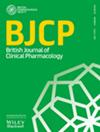Optimizing β-lactam-containing antibiotic combination therapy for the treatment of Buruli ulcer
Abstract
Aims
The current treatment for Buruli ulcer is based on empirical evidence of efficacy. However, there is an opportunity for shortening its duration and improving response rates. Evolving understanding of the pharmacokinetic–pharmacodynamic relationships provides the basis for a stronger dose rationale for antibiotics. In conjunction with modelling and simulation, it is possible to identify dosing regimens with the highest probability of target attainment (PTA). This investigation aims to: (i) assess the dose rationale for a new combination therapy including amoxicillin/clavulanic acid (AMX/CLV) currently in clinical trials; and (ii) compare its performance with alternative dosing regimens including rifampicin, clarithromycin and AMX/CLV.
Methods
In vitro estimates of the minimum inhibitory (MIC) concentration were selected as a measure of the antibacterial activity of different drug combinations. Clinical trial simulations were used to characterize the concentration vs. time profiles of rifampicin, clarithromycin and amoxicillin in a virtual cohort of adult and paediatric patients, considering the effect of baseline covariates on disposition parameters and interindividual variability in exposure. The PTA of each regimen was then assessed using different thresholds of the time above MIC.
Results
A weight-banded dosing regimen including 150–600 mg rifampicin once daily, 250–1000 mg clarithromycin and AMX/CLV 22.5 mg/kg /1000 mg twice daily ensures higher PTA than the standard of care with AMX/CLV 45 mg/kg/2000 mg once daily.
Conclusion
The higher PTA values support the proposed 4-drug combination (rifampicin, clarithromycin, AMX/CLV) currently under clinical investigation. Our findings also suggest that higher rifampicin doses might contribute to enhanced treatment efficacy.


 求助内容:
求助内容: 应助结果提醒方式:
应助结果提醒方式:


